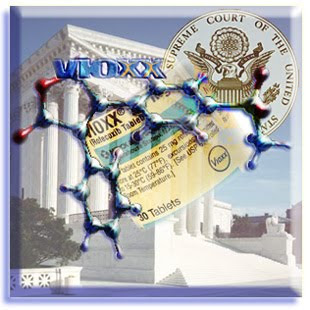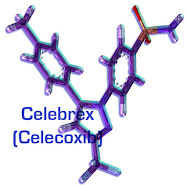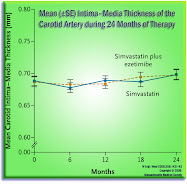 Overnight, the very able US District Court Judge Joel Pisano, sitting in New Jersey's federal courthouse in Trenton, issued an opinion effectively all but blocking Mrs. Glynn's realistic avenues for an appeal, on her Fosamax® fracture case.
Overnight, the very able US District Court Judge Joel Pisano, sitting in New Jersey's federal courthouse in Trenton, issued an opinion effectively all but blocking Mrs. Glynn's realistic avenues for an appeal, on her Fosamax® fracture case.
You'll likely recall that at the end of April, after deliberating for only a little more than an hour, the jury found Mrs. Glynn hadn't proved up a failure to warn claim. So, this is by no means big news. It might become important in settings that are factually very close to Mrs. Glynn's though. It turns out that FDA rejected Merck's proposed change to the Fosamax warning label, for injuries such as the one Mrs. Glynn claimed -- only a month after she suffered her fracture. And so, Merck was prohibited under federal law, from making the warning Mrs. Glynn claimed would have helped her avoid her injury. That is the simplified root of what federal preemption is all about (at least as decided by the US Spureme Court in Wyeth v. Levine a few terms ago).
Here is a PDF of the Glynn opinion (an economical 17 pages of reasoning, penned by Judge Pisano) -- and the operative bit:
. . . .Here, preemption is warranted because there is clear evidence that the FDA would not have approved a change to the Precautions section of the Fosamax label prior to Mrs. Glynn’s fracture. In September 2008, Defendant submitted a PAS to the FDA, seeking to add language about low-energy femur fractures to the Precautions and Adverse Reactions sections of the label. In May 2009, approximately one month after Mrs. Glynn’s fracture, the FDA sent Defendant a letter approving the change to the Adverse Reactions section of the label but denying the change to the Precautions section of the label. The FDA’s rejection constitutes clear evidence that the FDA would not have approved a label change to the Precautions section of the label prior to Mrs. Glynn’s injury. . . .
Indeed, the evidence presented at trial establishes that the FDA would not have approved a label change to the Precautions section of the Fosamax label prior to Mrs. Glynn’s injury. In fact, Dr. Cheryl Blume (“Dr. Blume”), one of Plaintiffs’ experts who was “central” to Plaintiffs’ preemption analysis, testified that the FDA “rejected” Defendant’s PAS [the proposed label change]. . . .
Plaintiffs did not present any evidence at trial to refute preemption. First, Plaintiffs did not offer any evidence that Defendant’s PAS was rejected due to language, specifically the use of “stress fracture” instead of “AFF,” or that the FDA would have approved a properly worded label change. Instead, it would have been improper for Defendant to use the term “AFF” in 2008 when they submitted the PAS because, as Dr. Blume [Plaintiff's own expert] testified, the phrase “atypical femur fractures. . . wasn’t even contrived until 2010 or 2011. . . .”
The old adage is that "bad facts make hard law. . . ." This is one of those cases, given the statements of her own expert. As ever, we will track all material developments on the MDL/bellwether processes. [I'll be off the grid for most of the rest of the day -- watching Lord Stanley's Cup get hoisted, and bussed, live.]

















No comments:
Post a Comment